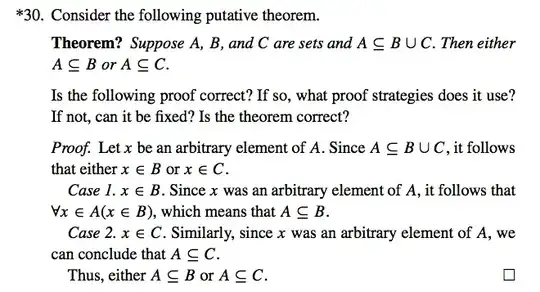I am working through Velleman's How To Prove It on my own and I am having trouble figuring out exactly why this proof is incorrect in a formal manner:
I have this intuitive feeling that makes sense to me that it should NOT follow that $\forall x\in A(x \in B)$ since you can't ensure that all elements of $A$ are also in $B$. I can even come up with a simple counterexample. But I don't know which formal step taken in the proof is incorrect.
Following Velleman's methods, if I have the goals $\forall x \in A(x \in B)$ or $\forall x \in A(x \in C)$, I can assume that $x$ is an arbitrary element of $A$. Then all I need to prove are the goals $x \in B$ or $x \in C$. I believe everything is correct up to this point.
Then the proof deduces from $A \subseteq B\space\cup C$ that $x \in B$ or $x \in C$. Assuming either one of them proves one of the goals true and the theorem is proven. I know one of these steps in here is incorrect but I was wondering of someone can point me to what exactly went wrong.
Thanks!
